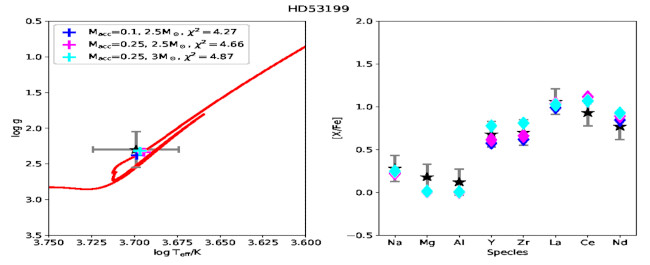Stellar Structure and Nucleosynthesis
Stars are responsible for the production of (almost all) the elements in the Periodic Table. Some elements are formed during the quiescent phases of nuclear fusion that happen during a star’s life. Others form in the violent processes that mark the demise of more massive stars. Which stars form which elements, and how those elements form, is what stellar evolution and nucleosynthesis aims to understand.
Stellar evolution looks at how stars change their structure and compositions over the course of their lives. As these internal conditions change, different nuclear reactions become possible. Nucleosynthesis aims to understand how stellar conditions impact the formation of the various isotopes.
It is common for stars to evolve in binary (or even multiple!) systems. The presence of a companion can have a significant effect on the evolution of a star. Systems that are close enough together can transfer matter from one star to the other. This changes the way both stars evolve and alters their surface compositions.
Binary mass transfer can provide important clues to the nucleosynthesis that took place in stars that disappeared long ago. Examples of this are the so-called carbon-enhanced, metal-poor stars and the barium stars. Both of these types of object are formed by the transfer of material via stellar winds. These come from an asymptotic giant branch (AGB) star to a lower-mass, unevolved companion.
The AGB star then fades from view, leaving the altered composition of the companion as the only clue to its nucleosynthesis. By studying the companion’s unusual abundances, together with modelling how binary stars evolve, we are able to infer the nucleosynthesis that took place in long-dead stars.
Figure 1 shows an example of this. It shows the observed surface composition of the barium giant HD 53199, along with its evolutionary state. These results are based on a detailed calculation of nucleosynthesis in AGB stars. This is coupled with simulations of the companions after mass transfer has taken place.

